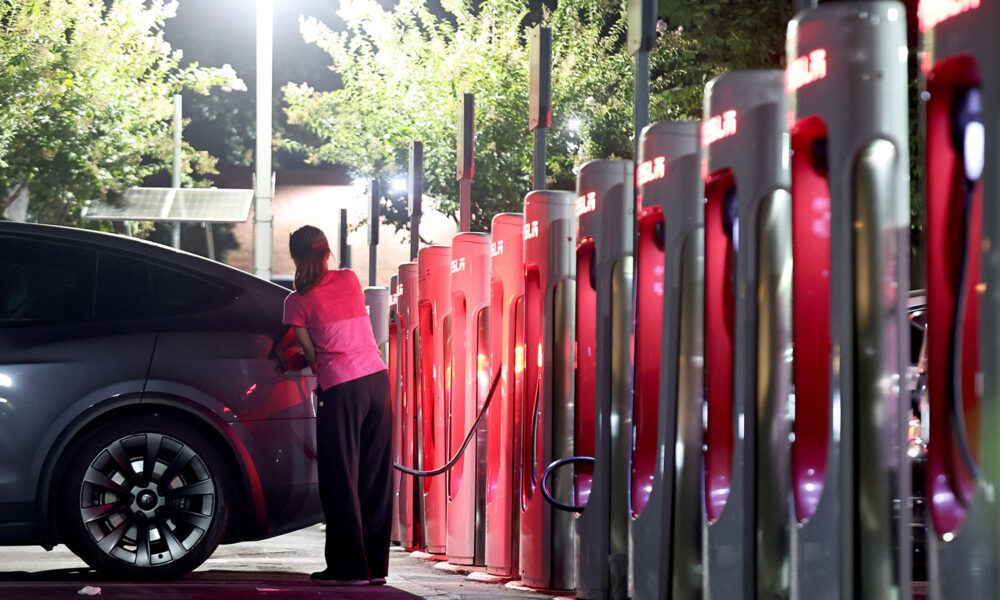Two weeks ago, the Federal Highway Administration released Interim Final Guidance to states for implementing the National Electric Vehicle Infrastructure (NEVI) Formula Program. Public comments on that guidance are due tomorrow.
If the guidance truly signals that the program will reopen broadly, that is overall good news for the billions of dollars being held up by the suspension of the program as of February of this year. I say ‘broadly’ because the program has already reopened for states granted injunctive relief against the suspension from the courts. More on that later.
I’m skeptical that the flow of funds will, in fact, resume after states submit updated plans—I’ll believe it when I see it. If the dollars do make it out the door to install EV chargers, I’m concerned about possible negative consequences of removing so many requirements meant to ensure the equitable deployment of EV charging. For example, there are no longer requirements to address practical matters, such as safety and disaster preparedness, or to ensure that the benefits of EV charging, such as increased mobility options and economic opportunity, are made available to more people, regardless of where they live.
Days before the turnover of the presidential administration in January, I wrote a blog post on NEVI Program implementation that provided a progress record and noted a few areas for improvement. The progress catalogued in that post shows that, as of January 2025, the program successfully issued hundreds of awards, opened nearly two hundred chargers, and importantly, established the capacity at state departments of transportation to accelerate progress on awards and completed projects. While there is room for improvement, the program has not been a “failure” as the new U.S. Department of Transportation claims in the guidance release announcement, citing only one inconclusive metric, the percent of unobligated funds. In fact, the strongest success of the program in its early years has been setting up deliberate, transparent processes and procedures, which is the responsible thing to do when spending public money.
Beyond the numbers and qualitative milestones showing forward momentum, the question lurking between the lines of my previous blog post is whether the then-incoming administration would allow the NEVI Program to continue to build on the foundational progress achieved in its early years. The answer to that question quickly turned out to be ‘no’… or at least not without throwing at least one big wrench into the gears of the program.
With a few paragraphs of text, EV charging projects were frozen midstride
The big wrench came in the form of a memo in February, wherein the Federal Highway Administration (the agency tasked with implementing the program) rescinded the previous NEVI Program guidance and the previously approved state plans along with it. In the same memo, the agency froze “new obligations” under the NEVI Program—a legally dubious move that left many states in the lurch, unable to pay contractors who were performing work on grant-awarded projects. In response to the memo, state after state announced their programs were on ice.
Taking umbrage at being left in the cold, 14 states filed a lawsuit against the unlawful funding freeze, with several public interest nonprofit groups doing the same shortly thereafter in order to seek a national remedy for the funding stoppage. Since then, most of the states on the lawsuit were granted injunctive relief, inspiring more states to join the suit. In addition, the nonprofit organizations were granted permission to intervene in the state lawsuit. At that point, states not granted injunctive relief remained unable to continue carrying out the NEVI Program while they awaited updated guidance.
New guidance could signal a thaw, with NEVI Program looking a bit different coming out of the ice
The big wrench memo promised an updated draft of NEVI Program guidance “in the spring.” At this point, I know better than to hold my breath for such things, so I had not asphyxiated when the Interim Final Guidance arrived belatedly earlier this month. Reading some of the media coverage of that guidance, you might think that the main thing lost is the pesky requirement to space stations 50 miles apart. Alas, if only that were so. (Some stories give a more complete view.)
The Interim Final Guidance scraps dozens of pages of previous guidance, templates, and forms with just over six pages of text that, essentially, recapitulates the section in the Bipartisan Infrastructure Law that governs the NEVI Program. A few additional bits of language in the guidance come from the minimum standards and requirements that apply to the program, including data reporting and the community engagement outcomes report.
The goal posts have moved so far back that this could be, and indeed is being, seen by some as a win. Even I felt some relief at seeing US DOT Secretary Duffy say in the press release for the guidance, “we will respect Congress’ will” as he put forth guidance that is, at least, consistent with statute. I suppose an instance in which the rule of law prevails is something to celebrate these days.
The thing that troubles me about the bar being so low is thinking of the benefits that people and communities may miss out on under this skeletal guidance versus previous program guidance. For example, the goal to bring benefits to disadvantaged communities and the requirement to ensure rural and underserved communities’ needs and concerns are heard and considered in state plans has been discarded. There is also the likelihood that people may experience more challenges when seeking out EV charging in the absence of practical considerations contained in the previous guidance. Who needs snow removal or storm evacuation routes, right? The results of the program will be uneven across states now that there are fewer guardrails.
I have no doubt that some states will continue to plan and deploy projects in the spirit of previous guidance on community consultation, pursuing equitable outcomes, strengthening the workforce and other topics at the heart of deploying EV charging equitably. Whether they disclose the details of that in the plan they submit to the Federal Highway Administration by the 30-day deadline remains to be seen. To the extent they do, states are likely to adjust or omit language that could result in a hassle from the anti-woke administration.
Other states may abandon the spirit of the previous guidelines to do whatever they please—possibly very little. Part of the problem is that we, the public, may not have good visibility into the results of spending this public money if states no longer have to disclose the comprehensive details of their intentions in their upcoming (and final regularly scheduled) plans, or if the Federal Highway Administration refuses to publish data or claws back previously-accessible data and reports related to the NEVI Program as we have seen it do in some other areas.
Clues point to insincere claims of ensuring “efficient and effective” spending
The main thing the Federal Highway Administration has achieved in the recension and belated reissuing of guidance a six-month delay in program implementation. That delay could possibly be longer for the states that have not received injunctive relief, and I wouldn’t rule out additional delay tactics. For example, there is no deadline for the agency to approve or deny the state plans, giving the agency an opening to sit on them for quite some time.
There are numerous clues in the Interim Final Guidance that signal to me that this administration isn’t serious about the sentiments expressed in the guidance announcement to “ensure charging stations get built” and to spend the money “efficiently and effectively.”
1. Any guidance updates are unlikely to affect the plans submitted by the 30-day deadline
The administration gives only two weeks for stakeholders and interested parties to submit comments from the issuance of the interim guidance—not enough time to collect a significant amount of meaningful feedback, just gut reactions. Moreover, any guidance updates are unlikely to affect this round of state planning because plans are due within 30 days of the interim guidance, which is only two weeks after comments on the interim guidance is due. Even if updated final guidance could be issued before the plans are due, it would be absurd to make states amend their plans only days before the deadline. And these are the last required plans as far as I know. (Noting, the first plans submitted covered two fiscal years of funding.) A plan is required for the release of each fiscal year of appropriations, the last of which is fiscal year 2026, which begins October 1, 2025. In this context, opportunity for feedback on the guidance feedback and potential update seems hollow.
2. The Interim Final Guidance leaves gaps that could undermine thoughtful planning
The “streamlined” guidance leaves holes that need to be addressed to avoid confusion and enable states to comply with the minimum standards and requirements. For example, the Community Engagement Outcomes Report remains required (per the minimum standards rule). However, there is no longer guidance what a “disadvantaged community” is for the purposes of that report. The definition of disadvantaged communities in the standards rule says those communities are to have common conditions identified by the U.S. DOT and the U.S. Department of Energy. It gives examples of what to consider, but the guidance and tools that provide the consideration and definition have been axed. Given the time constraints and the sequencing of feedback and plan due dates described above, states will likely have to grapple with gaps such as this one for themselves. The requirement may produce meaningful engagement in some states, and it may result in a box-checking exercise in others.
3. The Federal Highway Administration neglects to institute a framework to define and track success for the program
The administration missed the opportunity to implement timely Government Accountability Office (GAO) recommendations (released July 2025) for a more comprehensive performance management framework. Such a framework would track progress toward benchmark goals on a specified timeline, providing clarity on the degree of program successes and shortcomings. If it were serious about achieving success, the administration would take the GAO advice to set goals for success and measure progress toward those.
Will there be more wrenches aimed at the NEVI Program?
I would love to be wrong in my skepticism. If states get a proper chance to continue installing charging under the NEVI Program, even under the skeletonized guidance, we can get a better outcome than we would have without those investments—notwithstanding the concerns I raised above. Power levels, port counts, and reliability requirements remain in force through the minimum standards and requirements, and these can help promote a more consistent charging experience across the country. And more flexibility on some details—yes, including the 50 mile requirement—may potentially benefit states whose most acute public charging needs are not along designated Alternative Fuel Corridors.
To me, the question of whether the meddling with the NEVI Program is over remains to be seen. The next few months will be telling. If the administration does approve the new state plans and the cogs of the program begin to turn again, it will be up to each state to determine how safe, accessible, and equitable its charging network will be.

